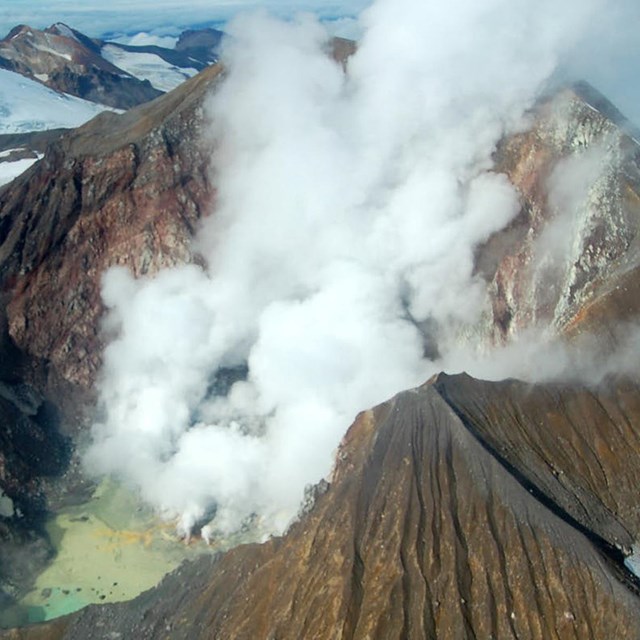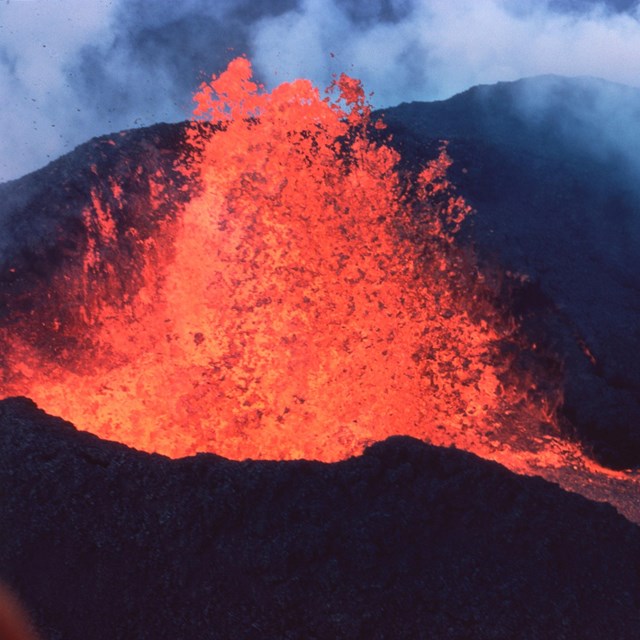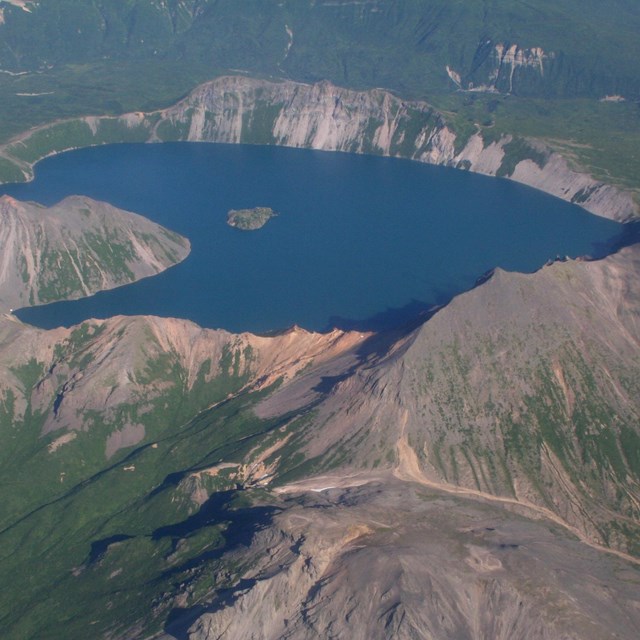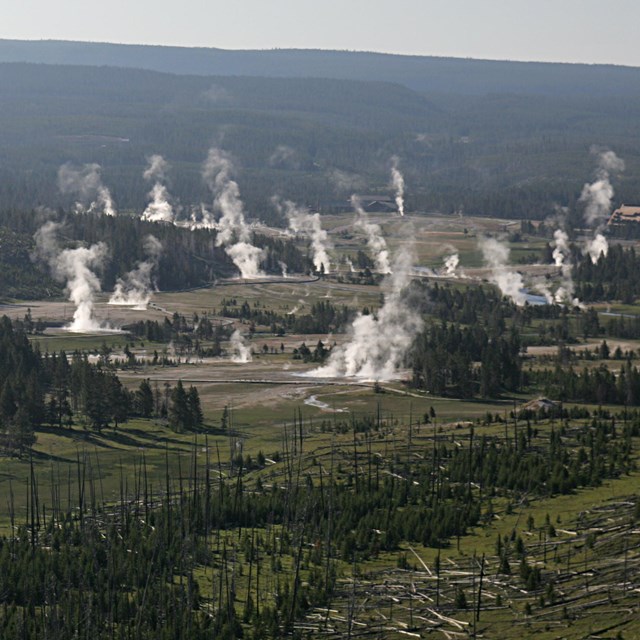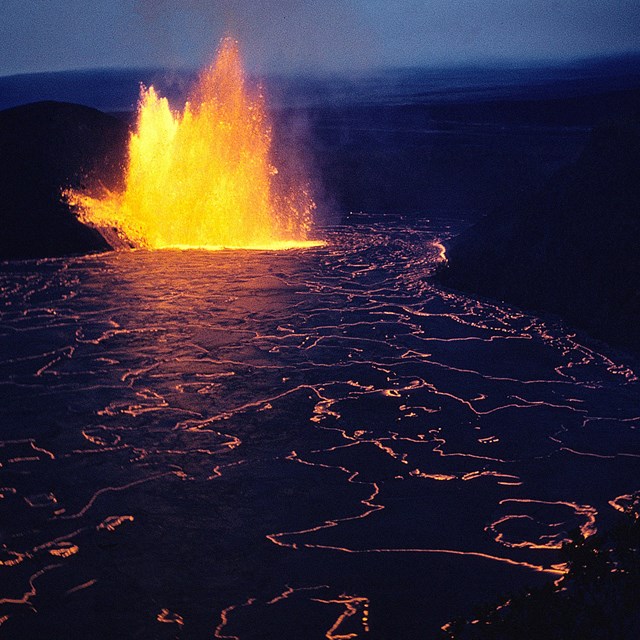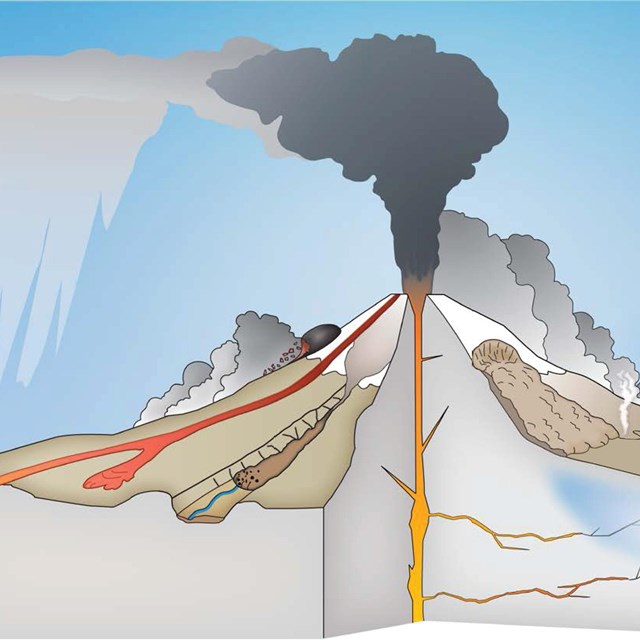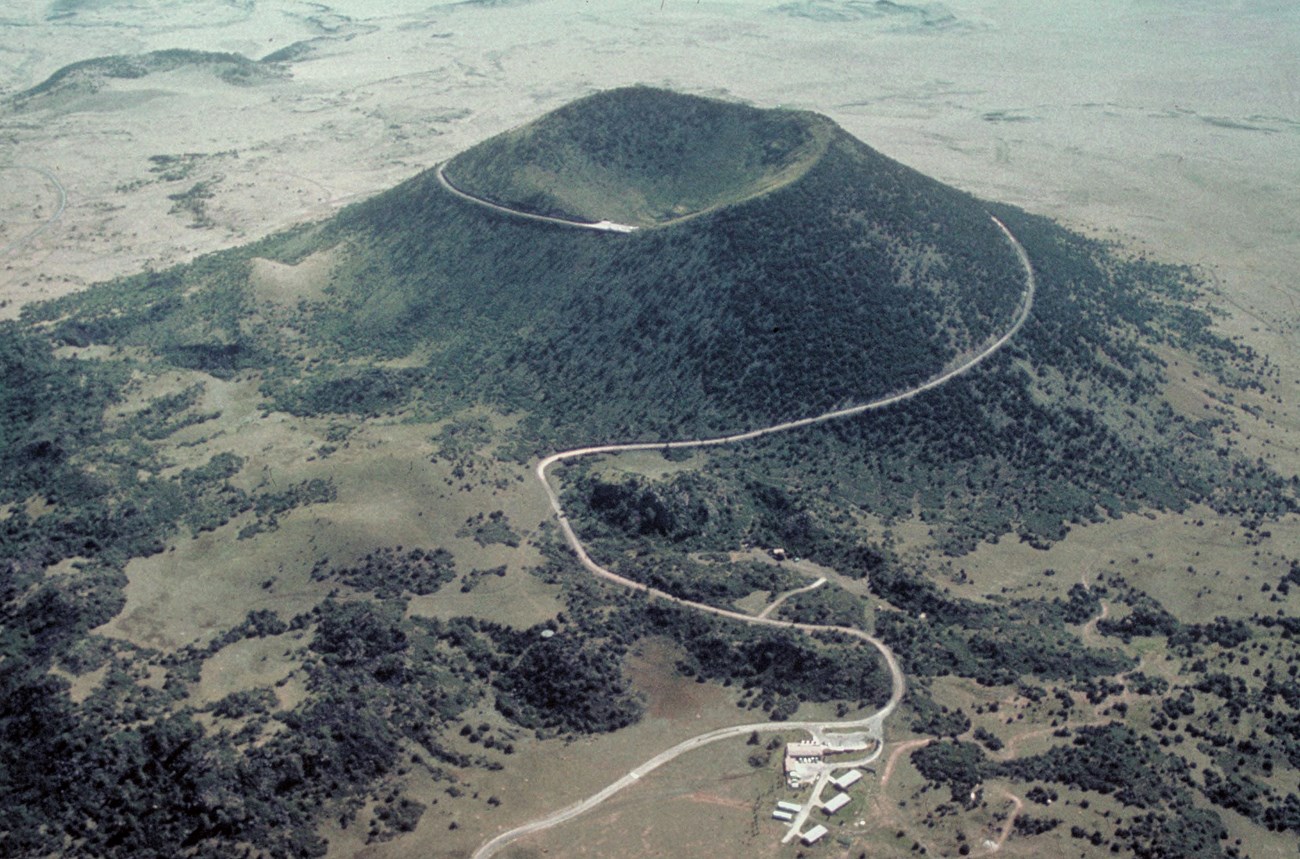
NPS photo.
Introduction
Volcanoes are places where magma (molten rock) and gases are erupted on to Earth’s surface or into the atmosphere. The one feature that all volcanoes have is a vent; e.g., the opening where lava, tephra, fragmented rock, and/or volcanic gases are erupted.
Beyond possessing a vent, volcanoes vary greatly in size and shape. They also experience large differences in the types (e.g., compositions) of magma erupted, and in style and type of eruptions with variations in explosivity, magnitude, and volume erupted.
Volcanoes also may have a variety of other features, which in turn, have a great range in diversity of form, size, shape, and permanence.
Many volcanoes have craters at their summits and/or at the location of other vents. Some craters contain water lakes. Lakes of molten or solidified lava may exist on some volcanoes. Fumaroles and other geothermal features are a product of heat from magma reservoirs and volcanic gases and are found in many volcanic centers.
Volcanic Features
Geothermal / Hydrothermal
Last updated: September 12, 2022

